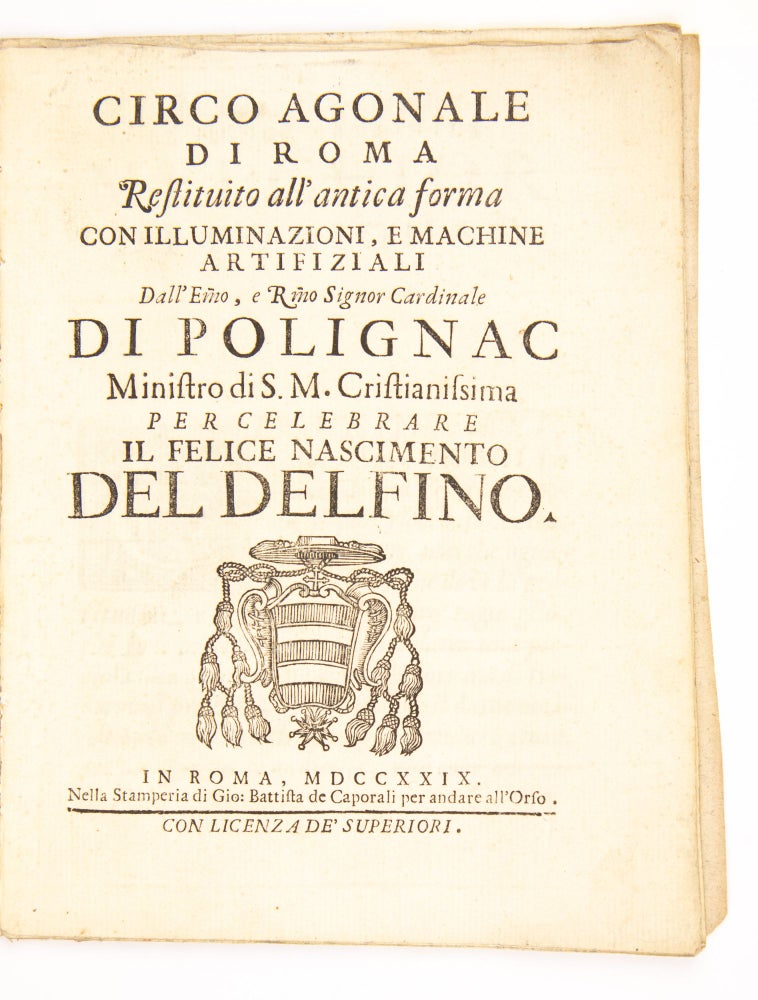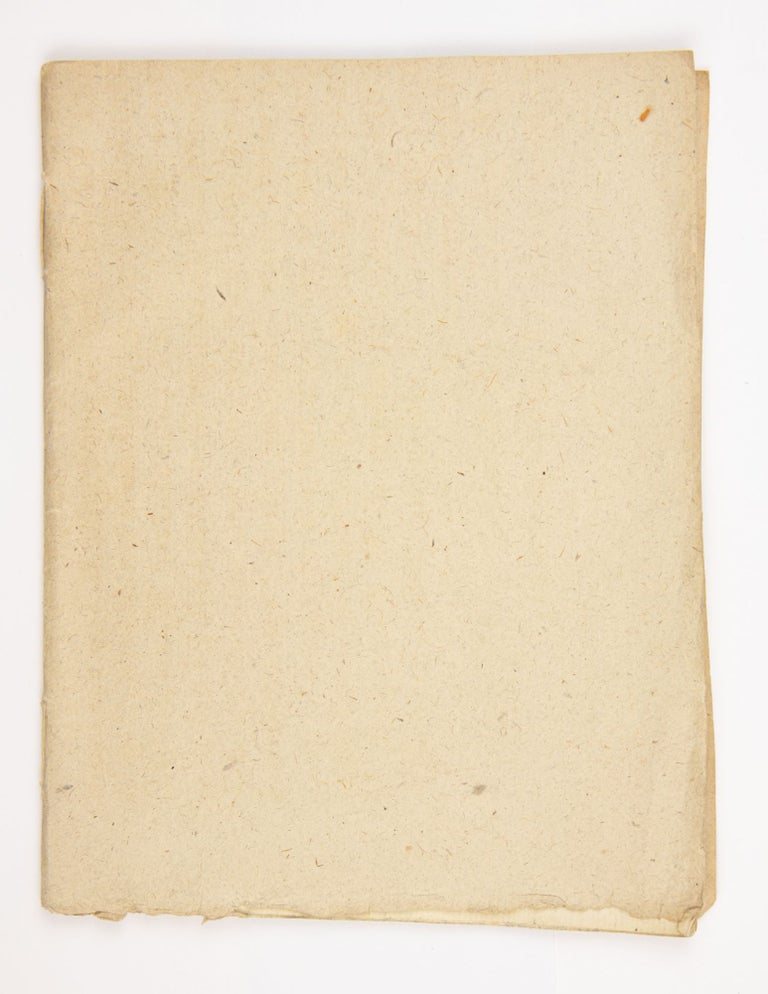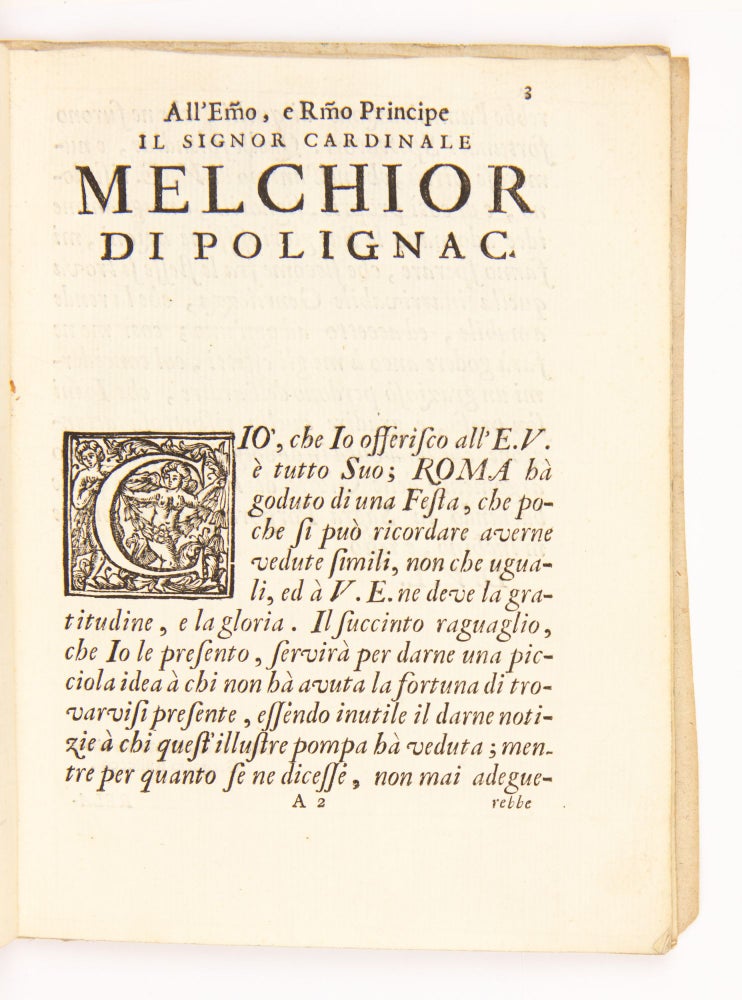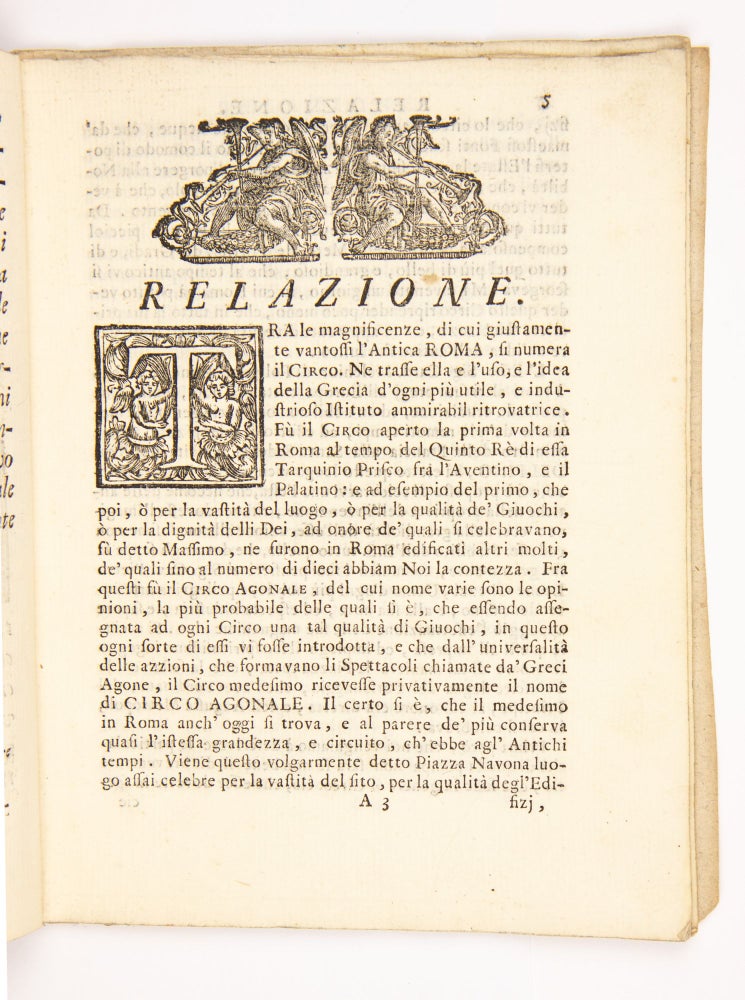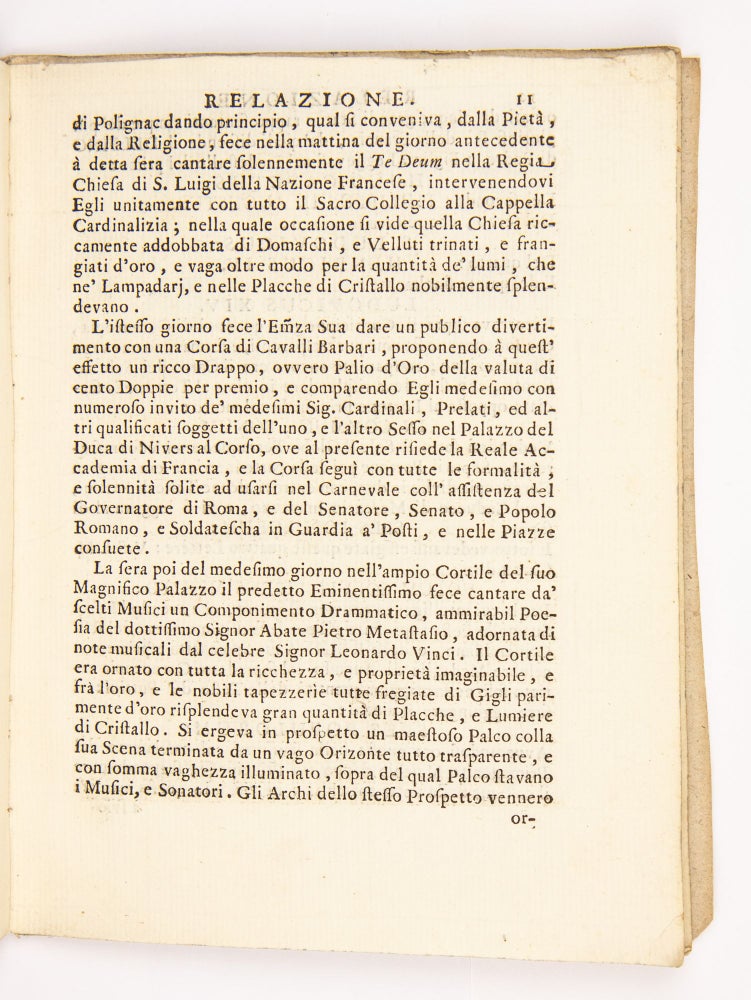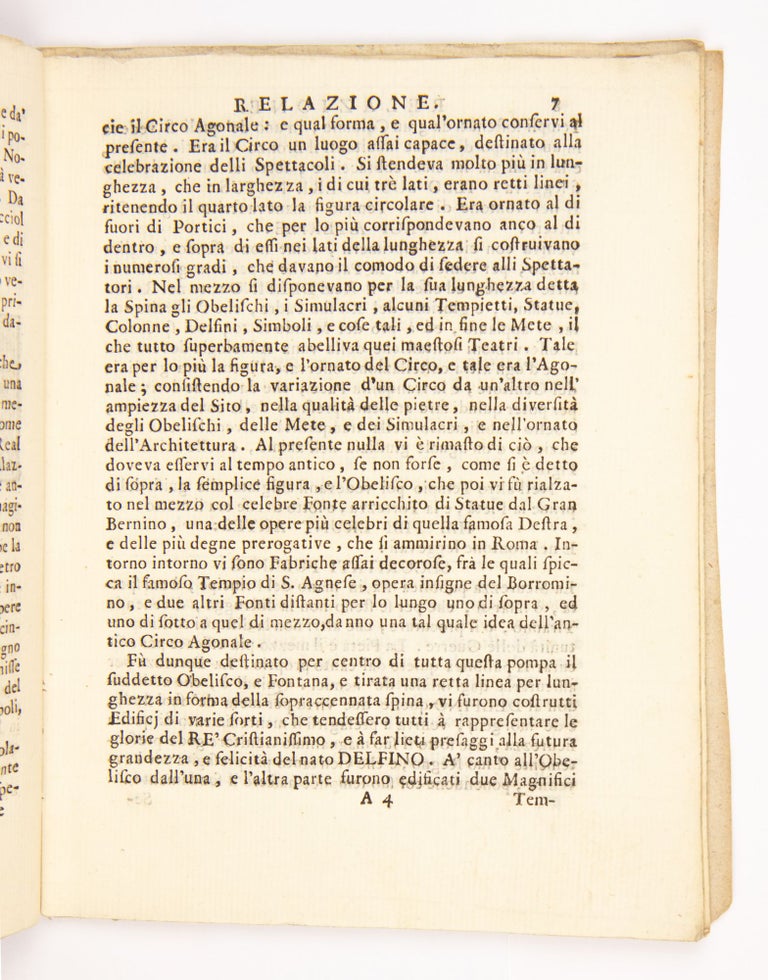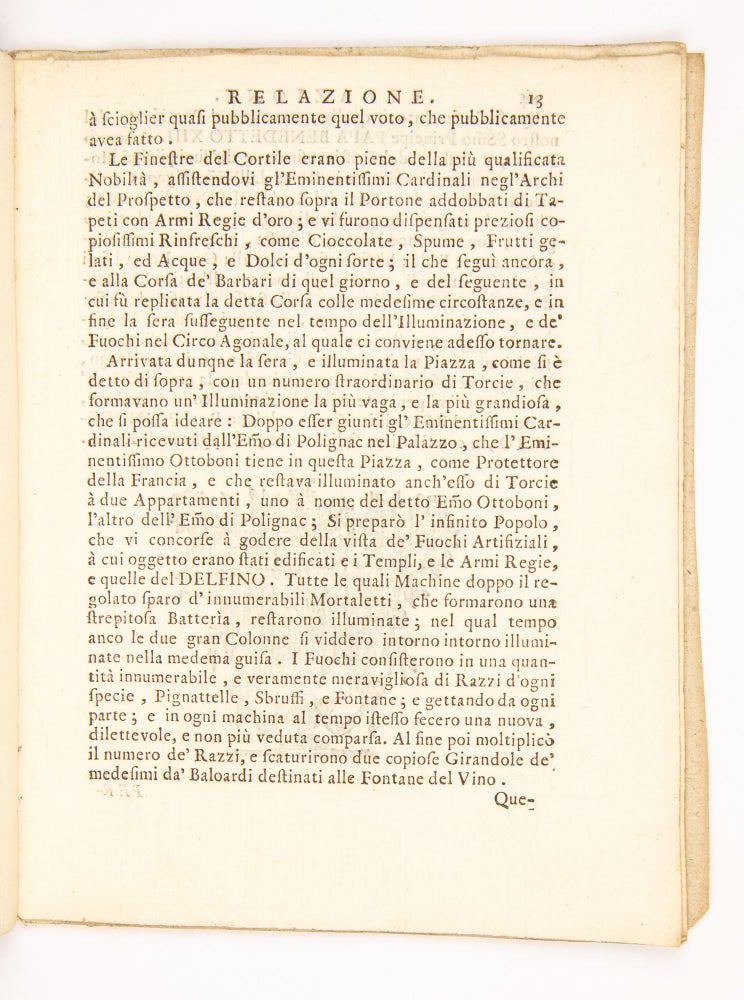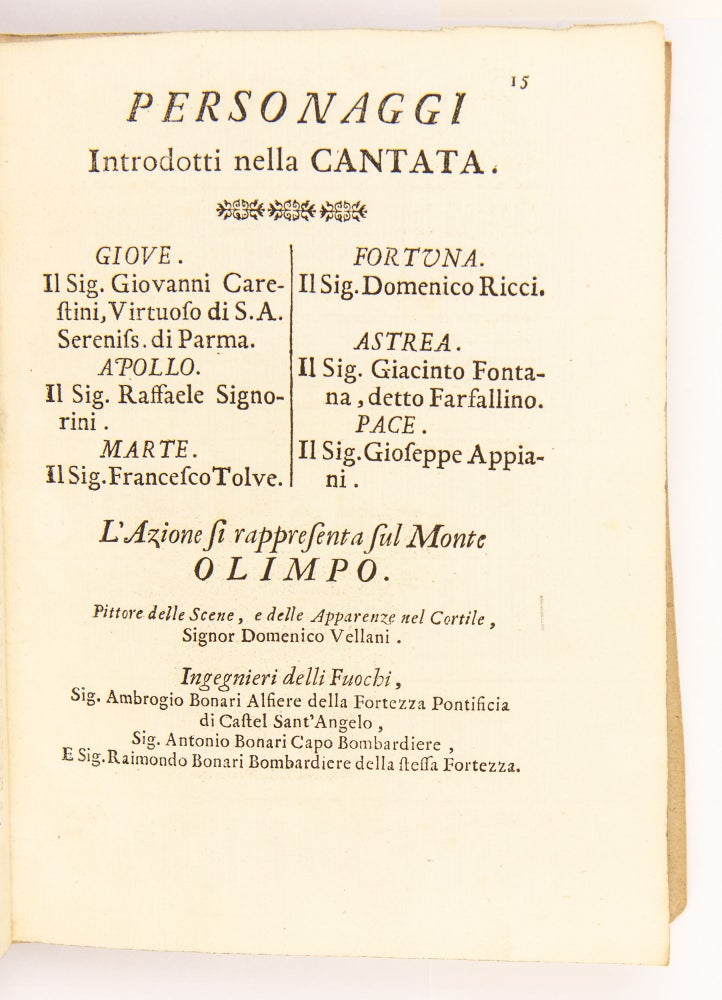Circo agonale di Roma restituito all'antica forma con illuminazioni e macchine artificiali dall'E.mo, e R.mo Cardinale di Polignac ministro di S.M. Christianissima per celebrare il felice nascimento.
Rome: Nella Stamperia di Gio. Battista de Caporali, per andare all'Orso, 1729.
Price: $3,800.00
Quarto: 22.2 x 17 cm. Two parts in one: 16; 16 p. Collation: A8; A8
FIRST EDITION.
Bound in later carta rustica. A fine, fresh copy on crisp paper. Very faint soiling to upper margin. A large historiated initial, decorative head- and tail-pieces. With the arms of Cardinal Polignac on the title page.
A very rare account of the elaborate transformation of Piazza Navona to celebrate the birth of the Dauphin Louis, son of King Louis XV of France (1715-1774) and his royal consort María Leszczyńska (1703-1768). The Rococo painter Pier Leone Ghezzi (1674-1750), charged with staging the events, had the piazza “restored” to its ancient glory as the stadium of Domitian, the foundations of which are buried beneath the piazza and give the modern space its distinctive, oblong shape. The spectacle was captured by the Roman painter Giovanni Paolo Pannini (1691-1765), who produced a painting of the Piazza in its glory, of which two copies exist. One is in the Louvre, the other in the National Gallery of Ireland.
The piazza was transformed by the erection of magnificent columns, quadriform temples (all painted to look like marble), monumental statuary, and fountains that flowed with wine (which was distributed to the spectators). The center-piece of the scene, Bernini’s Fountain of the Four Rivers; Borromini’s church of Sant’Agnese served as the imposing backdrop for this splendid display. All of these elements, including the inscriptions, the symbolism of the statuary, the royal blazons, the festoons of laurel, flowers, and flowers that unified the components, the torches and candelabra that illuminated the whole scene, the various instruments played, etc., etc. are described in detail.
The performances are also described. Musicians played from elevated stages, delighting the crowd with song. There were fireworks (conducted by the papal bombardieri of Castel Sant’Angelo), a cavalry parade, and a dramatic performance written by the celebrated librettist Pietro Metastasio (1698-1782), with music by Leonardo Vinci (1690-1730). The performance took place in the French ambassador’s residence, Palazzo Altemps, at the northern end of the piazza. The final page of the account names the performers, the set designer, and the engineers in charge of the fireworks.
The second part of the volume comprises sonnets composed in honor of the Dauphin, the boy’s mother, María Leszczyńska, and the French ambassador to the Vatican, Cardinal Melchior di Polignac.
Rossetti n° 3733 (mentioning only the first 16 pages). Cicognara 1496. Marcello Fagiolo, Corpus delle feste a Roma, II, p. 74-75.


